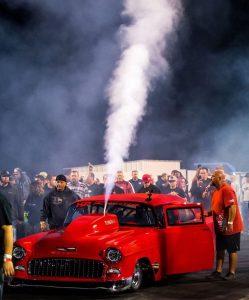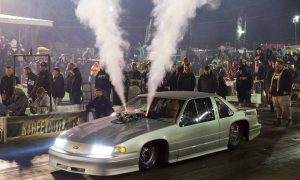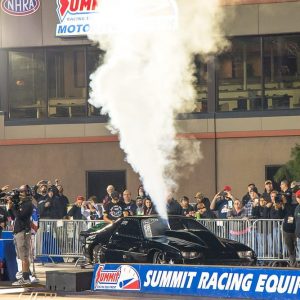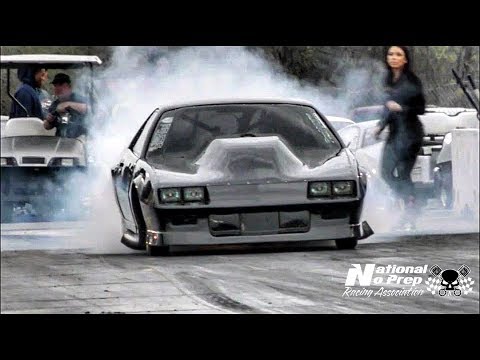


Nitrous Oxide…Also known as “laughing gas” in the Medical field, as it puts patient’s in an intoxicated state, has more uses then your local Dentist. In the context of racing, nitrous oxide is often termed “nitrous” or “NOS.” The term NOS is derived from the initials of the company name “Nitrous Oxide Systems,” one of the pioneering companies, in the development of nitrous oxide systems for automotive performance use.
In the world of engine combinations, both Turbocharging and Supercharging, compress air and force it into an engine by mechanical means, while “NOS” uses chemistry…But how?
As the liquid nitrous is injected, it changes state to a gas due to the lack of pressure in the surrounding air. When it changes to a gas, it drops in temperature to -88.5 degrees Celsius. This is actually one of the ways it helps to increase horsepower. As it cools the intake charge, it allows for more air in the cylinders, enabling you to burn more fuel. The oxygen atom attached to N2O has a strong bond, but this can be broken with heat. As the piston compresses the intake charge (as well as during combustion), the resulting heat breaks the oxygen atom off the N2O molecule. Now that the oxygen atom is isolated, it is freed up to be used in combustion. It combines with the additional fuel to create extra heat and pressure, increasing the amount of power the engine generates.
Nitrous cars are easily identified at NO-PREP events by the unmistakable ” NOS purge,” prior to reaching the starting line. When the purge system is activated, one or more plumes of nitrous oxide will be visible for a moment as the liquid flashes to vapor as it is released. The purpose of a nitrous purge is to ensure that the correct amount of nitrous oxide is delivered the moment the system is activated as nitrous and fuel jets are sized to produce correct air / fuel ratios, and as liquid nitrous is denser than gaseous nitrous, any nitrous vapor in the lines will cause the car to “bog” for an instant (as the ratio of nitrous / fuel will be too rich reducing engine power) until liquid nitrous oxide reaches the injection nozzle.
There are two categories of nitrous systems: dry & wet…In a dry nitrous system, the nitrous delivery method provides nitrous only. The extra fuel required is introduced through the fuel injectors, keeping the manifold dry of fuel. This property is what gives the “dry system” its name. In a wet nitrous system, the nitrous delivery method provides nitrous and fuel together resulting in the intake manifold being “wet” with fuel, giving the category its name. Both dry and wet nitrous systems can be used in various delivery methods.
Some methods are more popular than others, depending on the application needed. Since NO-PREP racing is the subject at hand, let’s look at some of the more commonly used systems.
The plate nitrous system, uses a spacer placed between the throttle body and intake ports with holes drilled along its interior surfaces, or in a tube that is suspended from the plate, for the nitrous or fuel/nitrous mixture to be distributed through., plate systems are the most easily reversed systems as they need little to no permanent changes to the intake tract. Dependent on application, plate systems can provide precise nitrous or fuel/nitrous mixture distribution like that of direct port systems.





